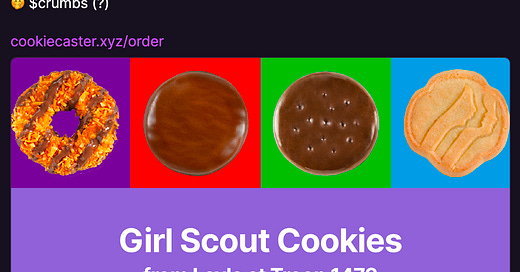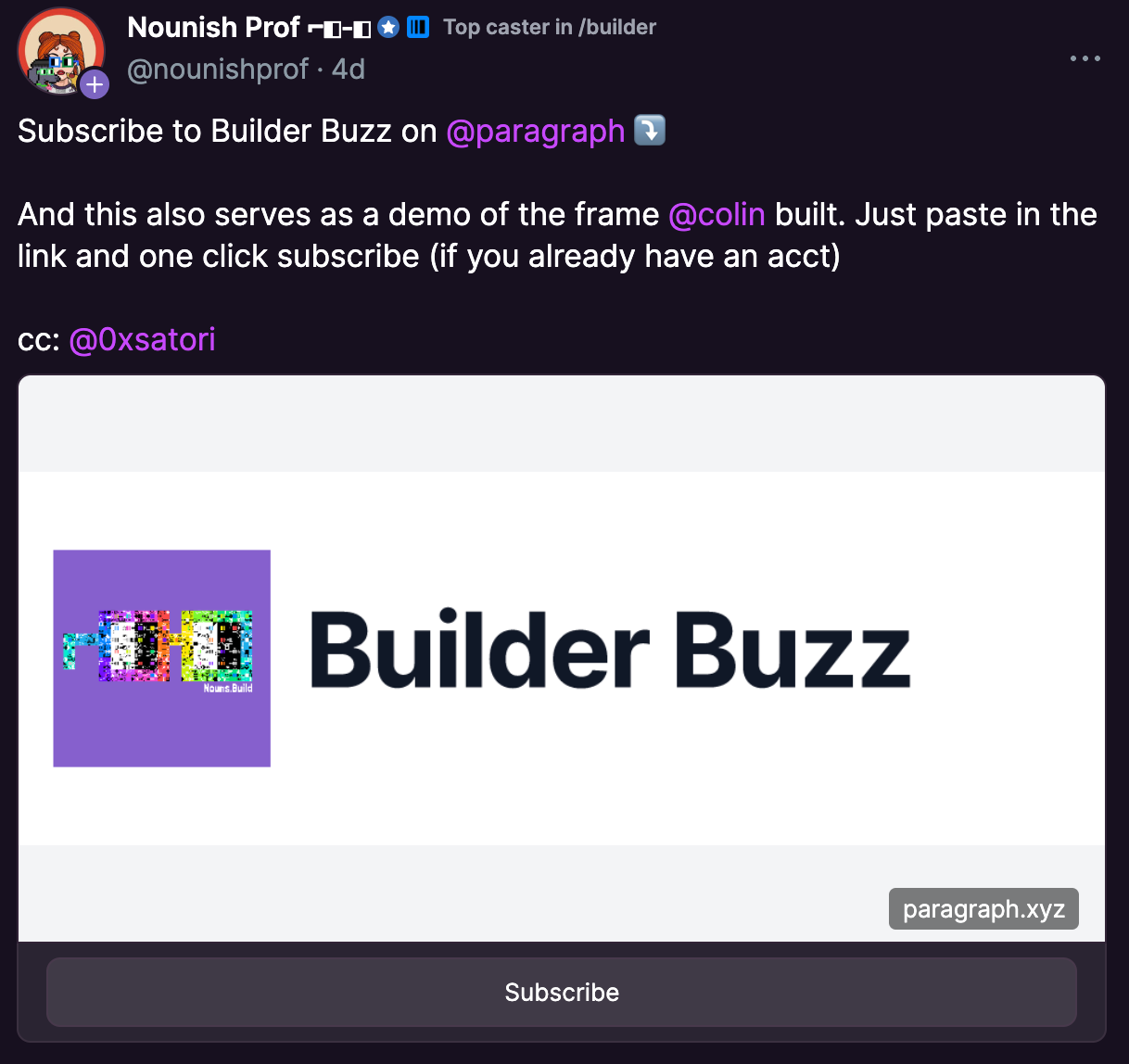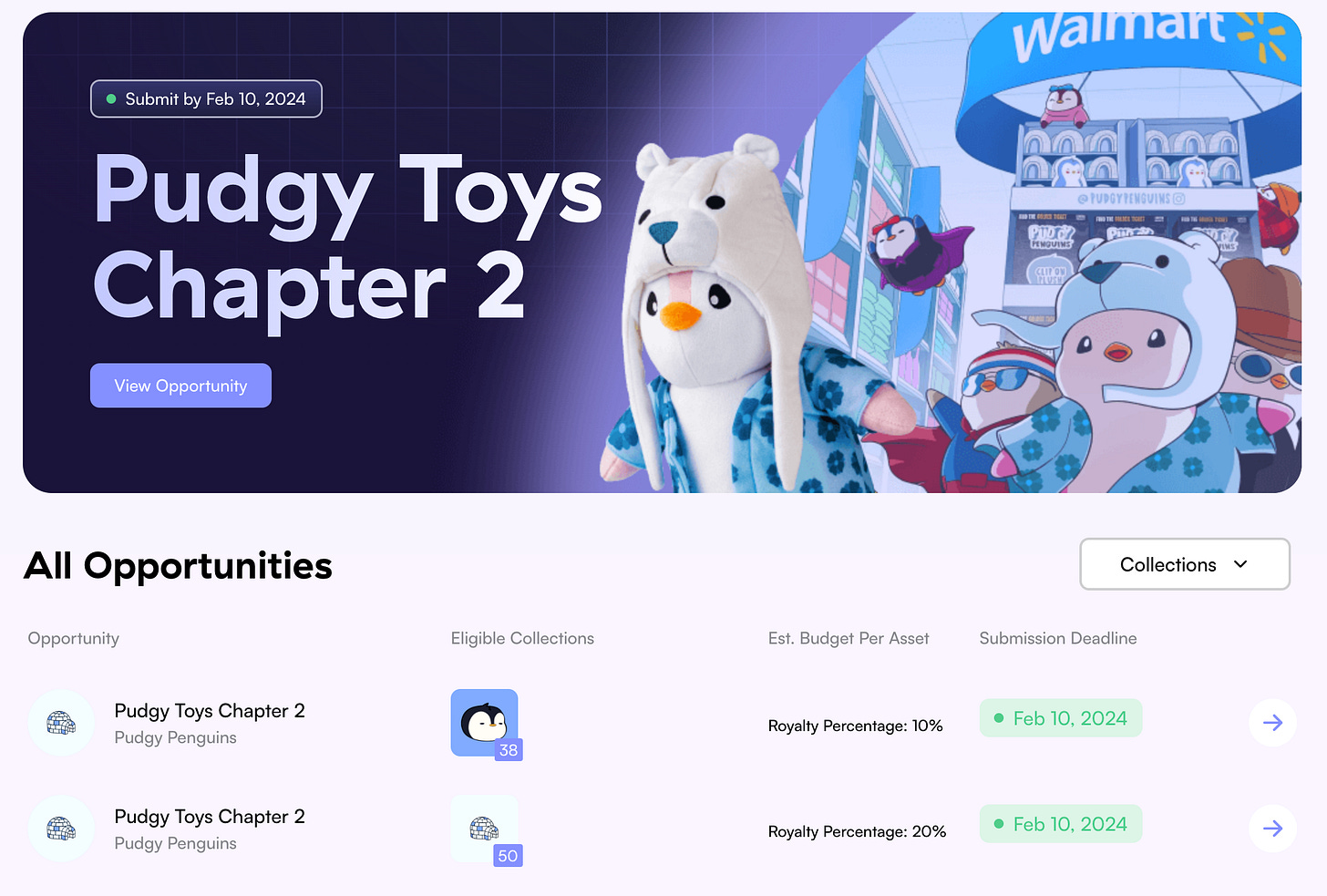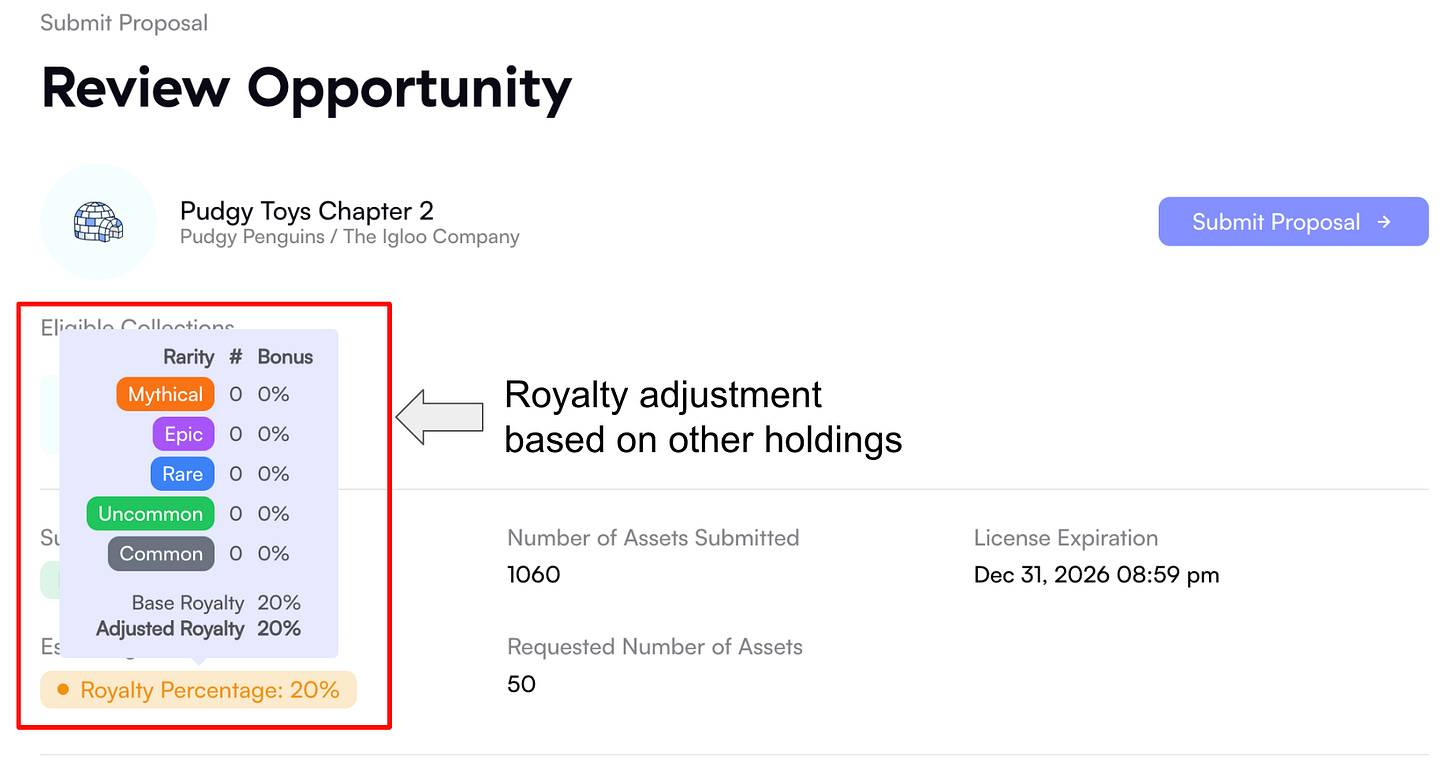Today’s piece is brought to you by Cookie3!
Cookie3 is a web3 analytics platform that helps marketing and growth teams understand their visitors and wallets more effectively. Think Google Analytics for web3 😉
What can you do with Cookie3?
Launch marketing campaigns focused on onchain KPIs and metrics
Evaluate user quality through wallet-specific parameters such as age or token holdings
Build personas using onchain data and match them with social profiles for targeting
Get a complimentary 3-week trial and lifetime 20% off with the promo code SUBSTACK.
Farcaster launches Frames
For those of you unfamiliar with Farcaster, I wrote about them here (they’ve come a long way). If you want to sign up, scan the QR code here — Chris Dixon is doing an AMA tomorrow!
The state of the web3/decentralized social space has been something like this:
Alright that’s a little aggressive, but isn’t completely off. Many of the web3 social products that launched over the past couple of years look like X clones, cause more operational headaches than benefits (eg: I have to check 3 social feeds instead of 1 now), and don’t have mainstream appeal (yet).
On the other hand, some of these apps have found product market fit with web3 natives, are experimenting with features that aren’t possible on mainstream social apps, and are attracting notable figures as early adopters.
One feature that has gotten people excited is Farcaster Frames, announced last Friday via a simple post by V, Farcaster cofounder.
What are Frames?
Frames are effectively mini-apps within a post. The way Farcaster implements it is novel although the concept itself isn’t. If we take a step back, numerous versions of this concept exist today:
Post types on mainstream social apps
Varun’s example in his launch post was a Frame for a poll, while below I have a draft of a hypothetical poll on X.
Both are mini-apps, but one is an established feature and post type while the other is one example out of many with the possibilities limited by the creator.
Phantom Shortcuts
Phantom has been incorporating its own version of Frames in its wallet. Some examples of the functionality:
Specific assets are turning into mini-apps within the Phantom wallet. The current limitation is that Phantom hasn’t opened up these Shortcuts to everyone yet since it’s in beta. However, this is one big step further than post types on social media apps previously mentioned.
Browser extensions
A feature so commonplace that we frequently forget about them, browser extensions are essentially mini-apps that provide more functionality to the web browsers we use every day.
There are now hundreds of thousands of extensions, some of which have been a part of multi-billion dollar acquisitions.
Frames takes elements of each of the above examples:
Enhance the ‘what’ that can be posted in terms of content (web2 social post types)
Incorporate onchain elements based on holdings (Phantom Shortcuts)
Supercharge the core experience (browser extensions)
The technical details of Frames are here and Dan (the other cofounder) shared a simplified description of what Frames are as well:
What has been built so far?
The Farcaster community has taken a strong liking Frames and they’ve been building. Some fun examples:
One-click subscribe to Paragraph newsletters: Although I’m still a Substack boi, this looks mighty interesting 🧐
Minting directly on Farcaster: You can add specific requirements, eg: Need to recast to mint, need to hold a certain amount of a specific token.
Claim testnet tokens: Great for devs and great for feeling fake rich!
And the crowd favorite, purchase Girl Scout Cookies with crypto!
Many Frames incorporate onchain capabilities (minting, subscribing, purchasing). This would typically be a potential point of friction because many folks don’t have wallet addresses and is negated because Farcaster requires a wallet address to use the protocol. Because of this, users are prequalified to interact with Frames and the onchain interactions that come with them.
Is this the killer feature web3 social needs?
Maybe, too early to tell. It’s clear that this is a feature that differentiates web3 social vs. web2 social and a few days in, Frames has helped Farcaster reach all-time highs in terms of users.
Earlier today the Farcaster team added additional functionality to Frames, allowing redirects within the Frame itself.
Organic interest around Frames has blossomed: Variant Fund hosted a spontaneous Frames hackathon last weekend in NYC and Deform is hosting a Frames hackathon this weekend in SF. We can expect more interesting applications of this feature in the coming days and weeks.
If you want to read up on more gigabrain thoughts on Frames (which IMO indicates that there’s something interesting happening), check out these takes:
Framing the Future of the Internet by Packy
Headless Marketplaces: Go Where the Wallets Are by Jesse Walden
Why Farcaster Frames are Important by Antonio García Martínez
Antonio provides a nugget that encapsulates the excitement well:
What we have in Frames is a new Web 3 primitive that Web 2 could never really power: an easy way to run app X while a user is still inside app Y, with little coordination between X and Y. The interoperable identity and decentralized transaction record of the blockchain, along with the seamless handling of money and digital ownership, makes it possible to have a real and universal graph of user actions across consumer apps, something even Facebook at the height of its popularity couldn’t manage. It is the Open Graph vision, even if all that remains of the original protocol is the <meta> tags that make the initial connection possible (while the blockchain does the rest).
Web3 social has struggled to play by the ‘rules’ of web2 social, but now we’re seeing ways in which web3 social is moving the goalposts and redefining the game itself 🖼️
Pudgy Penguins launches OverpassIP
Farcaster wasn’t the only web3 product that caught some buzz over the weekend. Pudgy Penguins launched the beta for their OverpassIP platform.
Overpass allows NFT holders, communities, and brands to execute licensing deals in a simplified way, especially on the legal front. The platform is launching with Pudgy Penguins first, providing opportunities for 88 Pudgy Penguins (50 bigs and 38 lils) for Chapter 2 of their merchandising efforts, after the success of Chapter 1 (750k+ toys sold in 7 months).
Side note: Although the Overpass announcement was delayed multiple times, it may have been a blessing in disguise as the Pudgy team announced the impressive 2023 merchandise stats, which allowed the Overpass announcement to pack a bigger punch.
From the perspective of NFT holders, the terms are laid out clearly and include additional features that are unique to NFT collections, like royalty bonuses based on holdings of other ecosystem assets.
Some other notes about Overpass:
Overpass was developed by a group of engineers that came from the Pudgy community, the ‘Penguineering Team’. This was a nights and weekends project 🤯
The team is looking into supporting assets from other chains, expanding the pie of the Overpass addressable market
The public launch will include additional licensing opportunities for the Pudgy community and other notable NFT projects
There have been multiple attempts in the past to create NFT IP licensing platforms, but they either didn’t gain enough traction or weren’t easy enough to use for holders. By focusing on the largest pain points (legal) and implementing a simple holder experience, Overpass might be a tool that helps the whole space realize the potential of web3 x IP.
As for me, I’m shooting my shot as well 🤞
See you Thursday!




















What do you wanna do with the lil pudgys? :D
It looks like a new way to optimize web3 entrance in real-world space